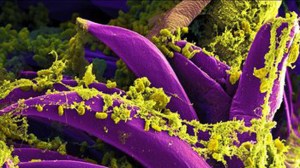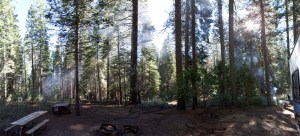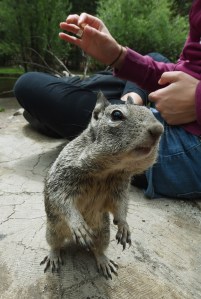California health officials announced on Thursday that they were investigating how a child from Los Angeles County contracted plague, the first reported human case of the potentially deadly disease in the state in nearly a decade.
The child became ill and was hospitalized after visiting the Stanislaus National Forest and going camping at Crane Flat Campground in Yosemite National Park in mid-July, according to a news release from the California Department of Public Health.

Officials have not released the name, age or gender of the child, but have said that the juvenile was recovering. The child’s condition, however, was not immediately known.
The state health department’s Dr. Vicki Kramer said the disease is endemic to California and is found throughout the state except in the Central Valley and desert regions. It’s mostly contracted through the bite of an infected flea, she said.
“This patient was camping in Yosemite and visited sites throughout the Yosemite Valley floor” and Stanislaus National Forest and “was probably bitten by a flea,” Kramer said.
The Los Angeles County Department of Public Health confirmed the young patient was at a hospital within the county, saying the child was diagnosed Wednesday.
County staff were working with the hospital to ensure proper treatment of the patient.
No other members of child’s family has reported any symptoms. State health officials were monitoring the child’s relatives and members of the camping party, according to the state release.
State Health Officer Dr. Karen Smith announced the department of health would be conducting an environmental evaluation of the Stanislaus National Forest, Yosemite National Park and surrounding area in order to figure out the source of the case.
The L.A. County Department of Public Health, U.S. Centers for Disease Control and Prevention, Yosemite National Park, and U.S. Forrest Service were assisting in the investigation.

Caution signs were set to be posted at Crane Flat and nearby campgrounds. Crane Flat, which has 166 campsites, is on the western edge of Yosemite National Park, off State Route 120; the southern portion of Stanislaus National Forest borders that edge of the park.
Plague is a rare but potentially fatal infectious bacterial disease, and is carried by squirrels, chipmunks, and other wild rodents and their fleas, according to the release. Fleas can carry the infection to warm-blooded animals and transmit it to humans.
“Human cases of plague are rare, with the last reported human infection in California occurring in 2006,” Smith said in the release. “Although this is a rare disease, people should protect themselves from infection by avoiding any contact with wild rodents.”
To avoid exposure, Smith advised not feeding squirrels, chipmunks, or other rodents in picnic and campground areas, and also to never touch sick or dead rodents.

“Although this is a rare disease, people should protect themselves from infection by avoiding any contact with wild rodents,” she said. “Protect your pets from fleas and keep them away from wild animals.”
The state’s Health Department issued other precautionary measures, including:
- avoid walking, hiking or camping near rodent burrows;
- wear long pants tucked into socks or boot tops;
- spray insect repellent containing DEET on socks and pant cuffs; and
- keep wild rodents out of homes, trailers, and outbuildings and away from pets.
Last year, plague activity was detected in animals in seven California counties: El Dorado, Mariposa, Modoc, Plumas, San Diego, Santa Barbara and Sierra.
Symptoms of the infection include a high fever, chills, fever, chills, nausea, weakness and swollen lymph nodes. Anyone with these symptoms is advised to seek immediate medical attention, especially if they have been camping our out in wilderness areas, and if they have been exposed to rodents and fleas.
Plague is treatable in its early stages, but can be deadly without medical attention, according to the release.
Since 1970, there have been 42 reported cases of plague in California, nine of which were fatal, health officials said in the release.
The disease is generally not transmitted between humans, unless the patient has a lung infection and is coughing. The last known human-to-human transmission of plague in the state was in 1924.
KTLA’s Melissa Pamer contributed to this article.
More Video:














